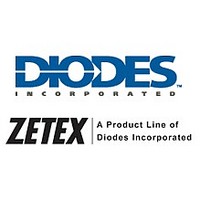AL8806MP8-13 Diodes Zetex, AL8806MP8-13 Datasheet - Page 13

AL8806MP8-13
Manufacturer Part Number
AL8806MP8-13
Description
Manufacturer
Diodes Zetex
Datasheet
1.AL8806MP8-13.pdf
(16 pages)
Specifications of AL8806MP8-13
Lead Free Status / Rohs Status
Supplier Unconfirmed
Available stocks
Company
Part Number
Manufacturer
Quantity
Price
Part Number:
AL8806MP8-13
Manufacturer:
DIODES/美台
Quantity:
20 000
Applications Information
Reducing output ripple
Peak to peak ripple current in the LED(s) can be reduced, if required, by shunting a capacitor C2 across the LED(s) as shown
already in the circuit schematic.
A value of 1μF will reduce the supply ripple current by a factor three (approx.). Proportionally lower ripple can be achieved with
higher capacitor values. Note that the capacitor will not affect operating frequency or efficiency, but it will increase start-up
delay, by reducing the rate of rise of LED voltage. By adding this capacitor the current waveform through the LED(s) changes
from a triangular ramp to a more sinusoidal version without altering the mean current value.
Capacitor Selection
The small size of ceramic capacitors makes them ideal for AL8806 applications. X5R and X7R types are recommended
because they retain their capacitance over wider voltage and temperature ranges than other types such as Z5U.
A 2.2μF input capacitor is sufficient for most intended applications of AL8806; however a 4.7μF input capacitor is suggested
for input voltages approaching 30V.
Diode Selection
For maximum efficiency and performance, the rectifier (D1) should be a fast low capacitance Schottky diode with low reverse
leakage at the maximum operating voltage and temperature. The Schottky diode also provides better efficiency than silicon
PN diodes, due to a combination of lower forward voltage and reduced recovery time.
It is important to select parts with a peak current rating above the peak coil current and a continuous current rating higher than
the maximum output load current. In particular, it is recommended to have a diode voltage rating at least 15% higher than the
operating voltage to ensure safe operation during the switching and a current rating at least 10% higher than the average
diode current. The power rating is verified by calculating the power loss through the diode.
Schottky diodes, e.g. B240 or B140, with their low forward voltage drop and fast reverse recovery, are the ideal choice for
AL8806 applications.
Thermal and layout considerations
For continuous conduction mode of operation, the absolute maximum junction temperature must not be exceeded. The
maximum power dissipation depends on several factors: the thermal resistance of the IC package θ
surrounding the IC, and difference between junction and ambient temperature.
The maximum power dissipation can be calculated using the following formula:
where
The recommended maximum operating junction temperature, T
determined by the AL8806’s junction to ambient thermal resistance, θ
temperatures the AL8806 has been packaged in thermally enhanced packages.
θ
air is approximately 60°C/W.
The maximum power dissipation at T
P
Figure 5, shows the power derating of the AL8806 on an FR4 51x51mm PCB with 2oz copper standing in still air.
AL8806 (Preliminary)
Document number: DS35144 Rev. 1 - 1
JA
D(MAX)
, is layout dependent and the AL8806 in MSOP-8EP’s θ
T
T
θ
= (125°C − 25°C) / (61°C/W) = 1.64W for single-layer PCB
JA
J(MAX)
A
P
is the ambient temperature, and
is the junction to ambient thermal resistance.
D(MAX)
is the maximum operating junction temperature,
= (T
J(MAX)
− T
A
) / θ
(cont.)
JA
A
= 25°C can be calculated by the following formulas:
www.diodes.com
HIGH EFFICIENCY 30V 1.5A BUCK LED DRIVER
JA
13 of 16
on a 25x25mm single layer PCB with 1oz copper standing in still
J
, is 125°C and so maximum ambient temperature is
JA
. To support high LED drive at higher ambient
(PRELIMINARY)
JA
, PCB layout, airflow
AL8806
© Diodes Incorporated
February 2011















